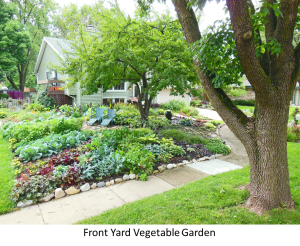The mild climate along the Upper Texas Gulf Coast allows gardeners to grow herbs and vegetables year ‘round. Year ‘round harvests mean year ‘round insects. The WaterSmart approach to growing herbs and vegetables incorporates plant diversification with companion planting and trap plants. By incorporating these organic practices, pesticide use in the vegetable garden is greatly reduced. Intermingling different types of plants within a garden (plant diversification) as opposed to planting in rows provides a natural deterrent to insect pests. Many herbs possess the natural ability to repel certain insects. When grown among vegetables (companion planting) insect pests are less like to affect the vegetable host plants. Similarly, some insects, if given a choice, will opt to feed on one type of plant over another. “Trap Plants” are deliberately interspersed in the garden to encourage feeding on it rather than another.
Companion Plants
Companion planting is growing together plants that complement and assist each other so that they can flourish. For example, some vegetables and herbs help each other thrive because they fix the nitrogen from the air in their roots and help improve the soil for other plants. Some also repel insects and animals.
- Plants that need a lot of water can be planted together, closer to the water source.
- Some plants thrive in the sun, while others do well in the shade.
- Separate plants that do not grow well together.
Trap Plants
Trap plants are “sacrificial” plants – more interesting to insect pests than the desired crop plant

